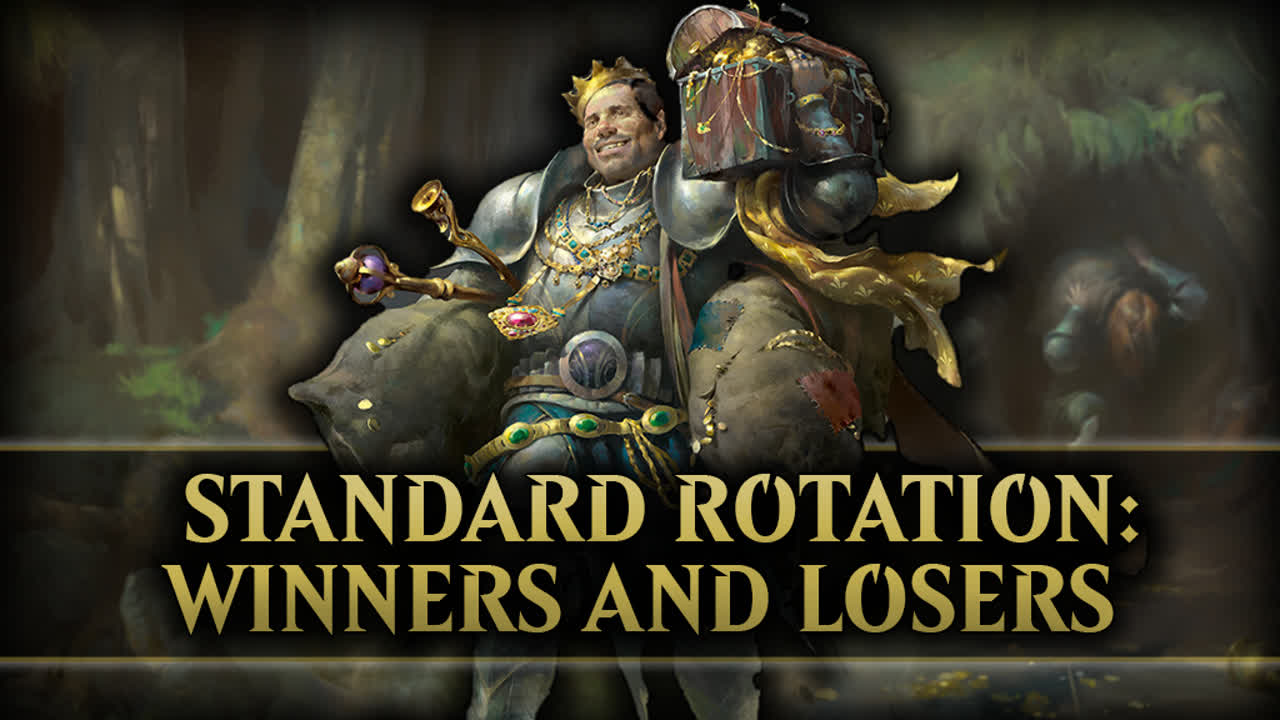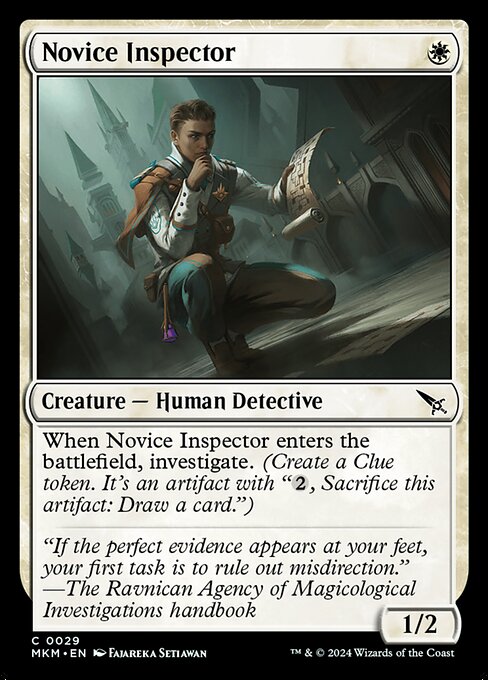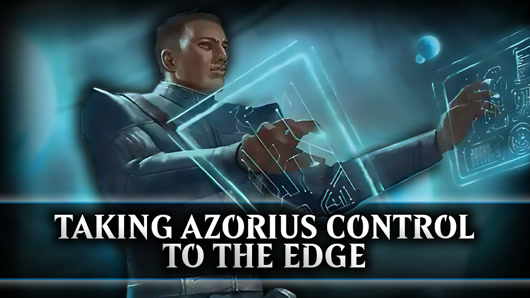Welcome Magic lovers!
With the conclusion of Pro Tour Modern Horizons 3 this past weekend in Amsterdam, the Modern format temporarily returns to the backburner as players focus on the current Pioneer Regional Championship Qualifier season and the upcoming, long-awaited Standard rotation just a few short weeks away.
While many competitive players are reluctantly grinding RCQ matches with mostly the same Pioneer decks we saw at Pro Tour Murders at Karlov Manor back in February of this year, the reality is that many players are getting tired of slogging through this relatively stale format. Unlike its big brother Modern, the Pioneer format doesn't get a 'masters' or 'horizons' set to forcibly keep things fresh, and outside of a ban announcement or the odd new addition from the latest set, it feels like there is little to no innovation happening.
This means that despite Pioneer being the format for the current RCQ season, much of the community is buzzing about the impending Standard shakeup that's about to occur, how it will transform the metagame, and what the landscape will look like going forward. In fact, the most oft-asked question concerning rotation is invariably: which decks (and specific cards) are going to remain viable post-rotation and are thus worth investing in?
Players on Magic Arena want to know if they are wasting their wildcards by crafting a deck that may or may not be tier 1 next month. In local game stores, many are agonizing over whether or not they should splurge on physical cards, spending their hard-earned cash on that Gix, Yawgmoth Praetor or Ancient Cornucopia, to perhaps see it plummet in value if these cards can't find a home in the post-rotation world.
Fear not! For today, we'll go over which decks are certainly going to disappear and should thus be avoided, which ones may be able to survive with some serious emergency surgery, in addition to which ones may have the staying power to remain at the top of the metagame once we lose the oldest four sets in Standard at the beginning of August.
The Winners
Of the current crop of tier 1 decks in Standard, several stand to lose very little in terms of key pieces, either because none of them rotate, or because suitable replacements already exist. These decks are the big winners post-rotation, so let's begin with the archetypes that may change slightly but almost certainly won't be going anywhere.
Boros Convoke
Ah yes, the fast, low-to-the-ground aggressive strategies are always the first to do well after a large rotation, as being the one asking the questions instead of trying to answer them is always a strong position to play from when the format at-large is uncertain. Boros relies on having a critical mass of one and two-mana creatures, ideally ones that produce an additional piece of cardboard, like Novice Inspector.
Luckily, almost all of the key cards in the deck won't be going anywhere with the rotation, except for Voldaren Epicure and a couple of the Kamigawa: Neon Dynasty channel lands. While losing one of the aforementioned ideal one-mana creatures does sting, there are other fine options to replace it with, including the oft-played Yotian Frontliner or Nurturing Pixie. With the anthropomorphic animal set, Bloomburrow, almost guaranteed to bring a host of tiny critters with it, the deck shouldn't have any trouble finding a replacement for the red vampire.
There's not much more to say about this already proven tier 1 deck. With key cards Knight-Errant of Eos, Warleader's Call and Imodane's Recruiter sticking around, as well as the rest of the supporting cast, this deck will certainly be the one to test against early, as it will certainly remain a very popular tier 1 choice.
Golgari Midrange
While the composition of the black-green midrange deck has shifted numerous times over the last year, in its current form, it actually loses very little from the impending rotation: the channel lands, of course, as well as one of its dual lands. This means the core of the deck remains fully intact, including its card draw engines like Mosswood Dreadknight, Caustic Bronco, and Gix, Yawgmoth Praetor as well as difficult-to-deal-with threats like Glissa Sunslayer and Aclazotz, Deepest Betrayal. The deck can even go back to playing powerful midrange creatures like Preacher of the Schism or Lord Skitter, depending on whether or not it wants to play around specific removal or passively attack the graveyard.
In addition to the excellent black removal spells that won't be rotating, it also gets to keep its fantastic creature land, Restless Cottage, as well as several fine planeswalker support options in Liliana of the Veil and Sorin the Mirthless. Golgari has the tools to stave off the early aggressive decks as well as out-value control strategies, so I don't expect it be going anywhere once the metagame shifts.
Dimir Tempo
Another midrange/tempo deck that really won't be missing anything crucial come rotation is Dimir. With only a few lands plus a couple of cheap counterspells like Make Disappear and Spell Pierce rotating out, the deck should have no trouble keeping up with the other tier 1 decks. Cheap disruption like Deep-Cavern Bat and Tishana's Tidebinder are great against basically everything in a wide-open, unknown metagame, and with Faerie Mastermind and Gix, Yawgmoth Praetor doing a lot of the heavy lifting with regard to card advantage, the deck still has a very potent core. The top of the curve still features powerhouse cards Sheoldred the Apocalypse and Aclazotz, Deepest Betrayal, while the removal suite can easily deal with any creature-based threats the opponent can throw at it.
Plan B consisting of Restless Reef and Mirrex are often how the deck closes the game, and they aren't going anywhere either. Perhaps the deck picks up a cheap counter like Phantom Interference to take the place of Make Disappear, or perhaps the deck leans more aggressive and goes back to playing Subterranean Schooner. Either way, Dimir Tempo is still in a rock-solid spot come rotation.
Now let's take a look at a few of the decks which I believe will be able to adapt, but may look quite different from their pre-rotation counterparts.
The Uncertain
Azorius Control
The blue-white control deck is one of the best decks in Standard, mostly due to the powerful spells it picked up in the last couple of sets, No More Lies and Three Steps Ahead. Before those cards were printed, control decks struggled in tier 2, as Make Disappear was too easy to play around in the early game, and too often dead in the late game. These two new counterspells aren't going anywhere, so why are the death knells tolling for Azorius already?
While many players are bemoaning the loss of the insane Memory Deluge and The Wandering Emperor, they forget that cards like Deluge and Emperor were floating around Standard for a long time, during which control was never a tier 1 deck. It wasn't the card draw spell and planeswalker that finally put control into tier 1. It was the printing of the powerful, cheap and flexible interaction that did it, combined with potent sweeper Temporary Lockdown being excellent against a good portion of the other tier 1 decks.
Thus, the deck isn't really losing very much. Uniquely powerful cleanser, Farewell, does say goodbye, but Sunfall and Temporary Lockdown are the real stars of the show here, and they aren't going anywhere. No More Lies and Three Steps Ahead are really the critical spells that let the deck play so effectively in the early game, regardless of what the opponent is up to, and they also remain after rotation. Losing a card like March of Otherworldly Light can be painful in a metagame infested with creature lands, but Get Lost or even Destroy Evil can replace it in a pinch. Yes, Memory Deluge is an amazing draw spell, but there are plenty of other options that, while not as objectively powerful, can still get the job done, such as Farsight Ritual.
The Wandering Emperor, however, was an incredible two-for-one every time one played it while also filling the role of win condition, and is unique enough in its effect on the game that it won't be easy to replace. That said, Azorius still has options. It could play something like Stoic Sphinx in that slot, for example, which plays nicely with the other instants in the deck while also doubling as a finisher.
With regard to the mana base, yes the channel lands were great, but the deck still gets to keep its creature land, Restless Anchorage, as well as Mirrex, while simply swapping Field of Ruin for Demolition Field. In the end, the tools still exist for the deck to handle anything the format can throw at it, and with potential new tools coming out in Bloomburrow to help the deck fill in the gaps, blue-white based control is still going to be a force to be reckoned with come rotation.
Domain Ramp
Another deck that many have written off as being dead rotation occurs, as the loss of the Streets of New Capenna tri-lands is a huge blow to the deck, is the once-dominant Domain Ramp. However, the core remains viable, as ramping into an Atraxa, Grand Unifier is still as powerful as it's ever been. The domain payoffs are also all still here, including Herd Migration and Leyline Binding.
Even its sweepers, Sunfall and Temporary Lockdown, are still solid. The trick will be to find the optimal mana base, and this will almost certainly mean playing two or possibly three primary colors, with the last two just being lightly touched for domain purposes.
Losing Topiary Stomper certainly isn't a huge blow, and indeed, many versions of Domain had already eschewed the awkward, three-mana dinosaur for life-gaining ramp like Ancient Cornucopia.
Invasion of Zendikar and Cartographer's Survey still exist to not only ramp, but also fix for colored mana, while the new surveil lands from Murders at Karlov Manor count as two basic land types for domain. I think the deck will obviously look very different once Bloomburrow drops, but I think the domain payoffs plus monsters like Atraxa are so powerful that players will find a way to make it work.
The Losers
When Wizards of the Coast giveth, they also taketh away. Such is the circle of life that is the Standard format, and for every batch of new cards that gets printed, some have to be retired and sent out to eternal pasture. This rotation is no different, so let's go over which of Standard's tier 1 decks will simply cease to exist.
Esper Raffine
When the namesake card of one's deck is banned or rotates out of the format, it's nigh-impossible for that archetype to survive. Thus, with Raffine, Scheming Seer finally hitting the road, the dreaded Esper midrange shadow over Standard will effectively be lifted. The deck has been a mainstay in tier one since Raffine's printing, seeing shifts from twenty-eight-legendary-creature versions to spell-based tempo/control iterations. Along with the powerful legendary sphinx, the deck also loses Dennick, Pious Apprentice and Wedding Announcement, which are also huge blows to how effectively the deck curves out and puts its opponent in an unwinnable position. The Esper Legends version of the deck which once relied on playing a critical mass of channel lands in order to grind the enemy into dust, however, those will also be disappearing.
Dimir Tempo decks are the spiritual successor to the Esper Raffine lists that have been firmly in the top tier of Standard since the legendary sphinx was first printed, and they seem like the natural pivot to make for those pilots looking to keep playing something similar post-rotation.
Temur Ramp
A deck that relies almost entirely on the interaction between the fetch lands from Streets of New Capenna and Nissa, Resurgent Animist plus Aftermath Analyst won't fare well when you take its mana away.
Not only that, but the archetype also loses its key card advantage piece, Memory Deluge, which allowed the deck to rip through its library at an insane clip in order to find the Worldsoul's Rage or Doppelgang to end the game.
While there are lands in Standard that can still sacrifice to find basics, like Evolving Wilds, they are far too slow and crucially don't gain life, which was one way the Temur Ramp deck survived to enact its unstoppable late-game plan. No, with the lands leaving, the deck dies, and while Nissa and Analyst are still very powerful, they don't have the foundation under them to really be broken in Standard. Fetch lands in Duskmourn? Don't hold your breath.
Four-Color Legends
The rogue deck that ascended to tier 1 in Standard will sadly sink back into the swamps from whence it slithered forth, as legendary ooze, Slogurk, the Overslime, rotates out along with the integral Kamigawa: Neon Dynasty channel lands. This forms the entire engine upon which the deck relies, so losing it means this archetype is finished.
While the interaction between Rona, Herald of Invasion and Inti, Seneschal of the Sun is still very powerful, and Relic of Legends is still an insane mana production engine with Rona, any deck attempting to utilize these pieces will invariably look vastly different from the Slogurk decks that ground their way into tier 1 of Standard.
There you have it, the biggest winners and losers of the upcoming Standard rotation with the release of Bloomburrow on August 2nd. Which archetype do you think will be the next big thing once the metagame shifts? Let me know in the comments below!


























































